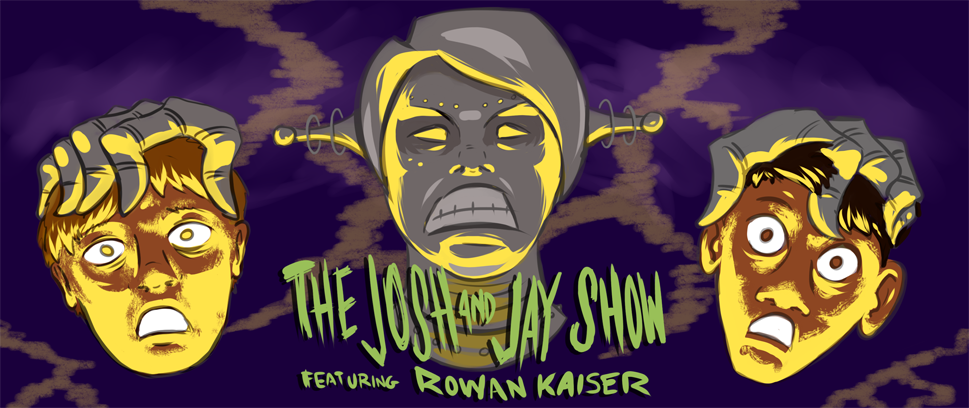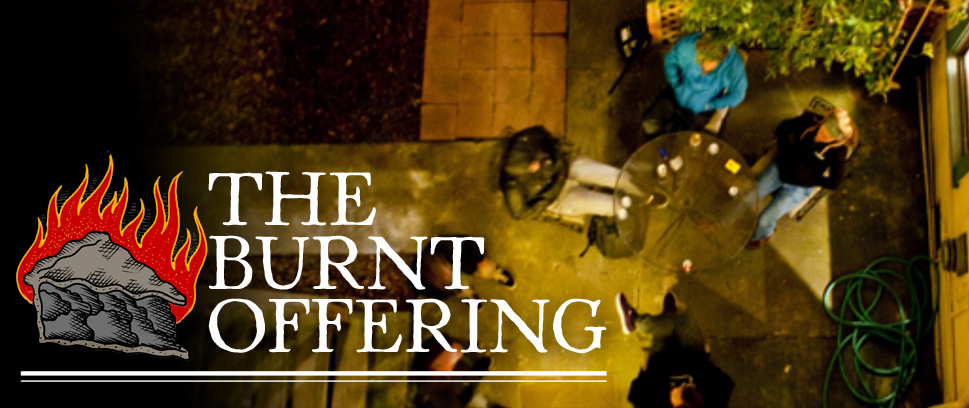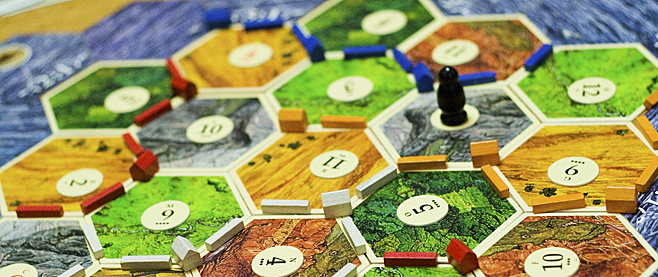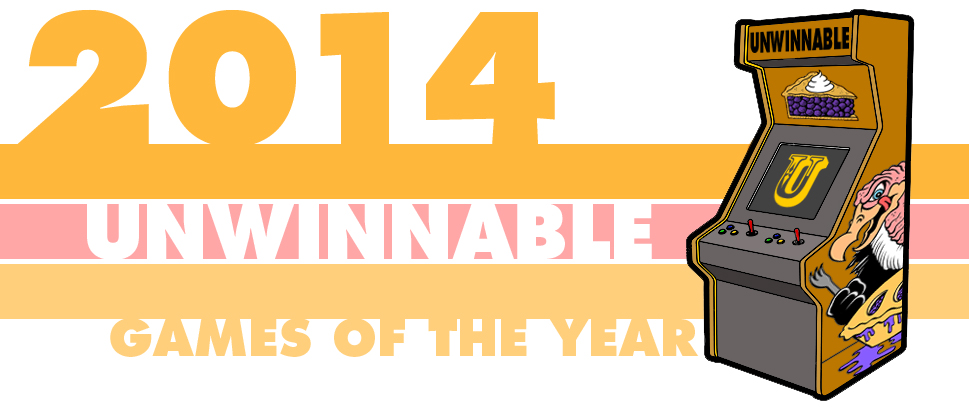
The Best Games of 2014
Whatever you expect out of the game you’re about to play, you’re probably wrong. That’s the lesson of the best games of 2014 – games aren’t what you think they are, they constantly surprise, they leave you reeling, they defy. While the machinery of the games industry has had a rough year by any insider’s estimation, the products are more varied, emotive and inspired than ever.
After E3 this year, I thought to myself, “This is it, this is the year I stop caring.” How wrong I was. The boundaries keep expanding. The possibilities are endless. Games still have me and, if 2014 is any gauge, they always will.
– Stu Horvath

Best Unlikely Homage – Alien: Isolation
Alien: Isolation is a game that on paper never should have been greenlit. It’s a triple-A adventure where you’ll die if you try to use most of your abilities carelessly, and one where the terrifying main adversary can’t be killed. (And if that’s not enough of a disempowerment fetish, don’t expect to survive most encounters with normal enemies either.) Even the awkward UI and archaic save point system flies in the face of big-budget convention. It’s that stars-aligning kind of game that only comes along once in a blue moon, and after the disaster Sega endured last year with Colonial Marines, the fact that it exists in any form is nothing short of a miracle.
Still, that was Aliens and this is Alien. Isolation is unquestionably the best game I’ve played all year due to its stubborn refusal to be anything but a spectacularly realized interactive extension of its namesake. Everything is geared towards your extreme vulnerability: you find guns you can’t shoot (unless you feel like a quick mauling-by-xenomorph), supplies are scarce and just braving your way down a handful of corridors while the alien is actively hunting you can be so tense it’ll leave your hands shaking. (The devs say to play it on hard, and you absolutely should.)
Maybe Isolation‘s best feature is its creaking Sevastopol station. Painstakingly fleshed out with the same chunky ‘70s attention to detail of Ron Cobb’s original designs for the Nostromo, that sense of really being there makes the terror you feel that much more authentic. Yeah, you’ll likely lose track of the hours spent hiding from Giger’s iconic monster, eyes trained on your motion tracker, waiting for a blip to draw off – I certainly did. Yet as the alien kills you again and again, your relationship with it becomes a special one. You learn as it does. I wouldn’t want it any other way.
– Steve Haske
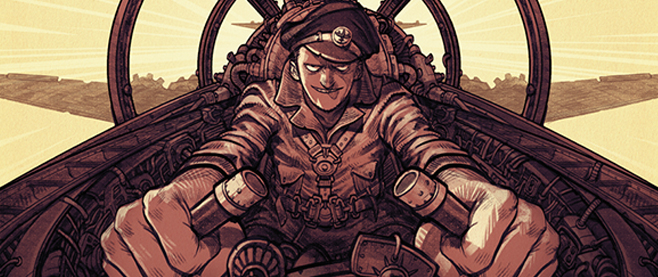
Best Dogfight – Luftrausers
Luftrausers came out while I was at GDC. I was living in a damp bungalo on the property where the Unwinnable House was located. It was a quiet retreat, away from the noise and excitement of the convention. I would stay up late customizing my plane, unlocking more weapons and armor, while blasting every enemy that would challenge me. With zen-like gameplay and a simple control scheme, Luftrausers made rolling, turning and diving an art form.
I love the way this game makes me feel when I am flying. Between the soaring music and action, I lose everything that is around me and focus only on flying. With the spirit of pulp in stories like Red Baron or Enemy Ace, Luftrausers invokes a powerful Imperialist imagery and pixel art style that I could fetishize.
During this time, Brendan Keogh also picked up Luftrausers and, before the end of the week, I think one or 2 more people in the Unwinnable House were playing it as well. Discussions about the best load-outs and tactics could be heard in between discussions about Towerfall and what your best score in Threes was. I would get frustrated and put it down for a few hours, but always went back for more. By the end of the week, I was annoying Brendan about how to destroy airships.
Luftrausers, far and away, was the most fun I had playing a game this year.
– Chuck Moran
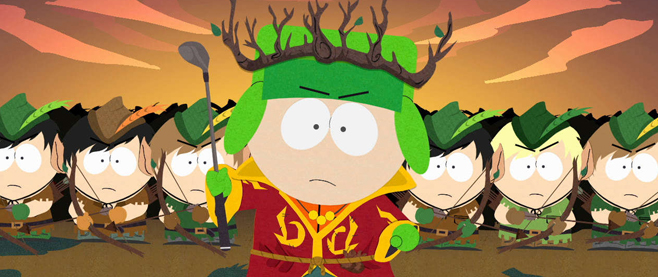
Most Effective Argument Against Voice Recordings As Exposition: South Park: The Stick of Truth
A little while ago, Unwinnable’s own Stu Horvath made a comment on Twitter about how odd it is that your characters in Dragon Age: Inquisition will quickly quaff their health potions and then just, like, toss ’em on the ground. It’s weird, because someone took the time to animate that sequence, but nobody considered what it might look like in practice. I bring this up because South Park: The Stick of Truth does away with this contrivance; if you fall in battle, your fellow party member can revive you with: a taco.
Let’s start with the obvious: nobody expected a South Park game to be good, let alone one of the best games of the year. I haven’t watched South Park on a regular basis in maybe 10 years, even though I do like the show and I consider the movie one of the funniest I’ve ever seen. That the game is still incredibly funny despite my lack of SP knowledge is a credit to the writing and voice acting; that the game is actually really fun to play is maybe the year’s most pleasant surprise, especially considering how troubled its development was.
The Stick of Truth manages to accomplish three pretty amazing things: it is essentially a very funny 12-hour episode of the show; it’s a smaller-scaled two-dimensional Skyrim that lets you explore nearly every nook and cranny of the town of South Park and its environs; and it thoroughly skewers a number of tired and overused videogame tropes, which is why this award has the specific name that it does. If you haven’t played it yet, I won’t spoil it, but any game designer who considers using a voice recording to deliver exposition from this point forward had best replay that specific section and make sure it’s something they still want to do.
Also: Nazi zombies.
– Jeremy Voss
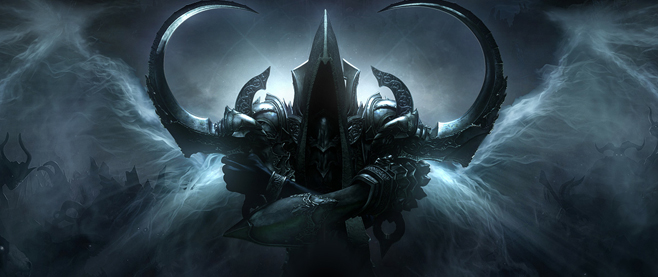
Best Satanic Ritual – Diablo 3: Reaper of Souls
I actually have to give this award as a tie to every ritual in the game, because I don’t think any of them were an unequivocal success. Seriously, the demon-worshiping assholes that make up the Diablo universe are really, really bad at summoning demons. What’s more impressive is the sheer amount of rituals going on at any given moment. As the Nephilim, I stumbled into a ritual about every 15 minutes. They usually went something like this – bust open door; punch cultist in face; cultists all explode into shitty little demons; kill demons; collect loot. Even when, in the off chance, they summon a major demon – I just wander along and murder it.
In Diablo, you’re constantly thanked and heralded as the savior of the world. All of the attention is nice, of course, but they don’t know the truth. The real savior of the world is a lack of proper training and an inability to follow the guidelines for demon summoning.
– Jason McMaster
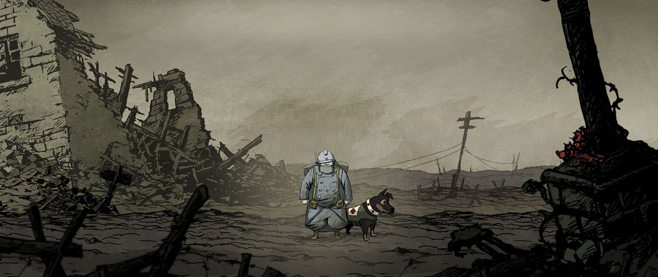
Best Potato Masher – Valiant Hearts: The Great War
There are very few games out there that can say they include a potato masher and no, that’s not used to make mashed potatoes. It’s a stick grenade used by the Germans during World War I and in one of the very first levels of Valiant Hearts: The Great War, you have to maneuver through the front lines of the battle with nothing but these grenades. Considering you’re throwing them at Germans, the level is light-hearted. The grass is green, the soldiers fall with dramatic yelps, and the music pushes you forward.
The descent into wartime horror is gradual and unexpected, especially considering the game’s cartoon-like elements, including choreographed tank chase scenes and mustache-twirling mad scientist villains. Valiant Hearts may seem like another war-based side scroller with silly characters and adorable animals (Walt the dog is the videogame character of the year), but it hides its more honest intentions about the tragedies of war and sacrifice, becoming one of the most genuine games about war in recent memory. Valiant Hearts may have started with a simple puzzle regarding a potato masher, but it reminds you by the end that you are throwing grenades
– Carli Velocci

Best Long, Punishing Walk – The Banner Saga
By the day after Christmas I was sitting in a car, admiring the beauty of the Welsh countryside blanketed in snow. I was also at the bottom of a hill slicked with ice. Even in this warm, petrol powered roadster a sudden snowstorm was making our exit from Wales all but certain. One thing was certain. I did not want to go on a long walk through a frozen wasteland.
Like the snowy Welsh countryside, The Banner Saga is a wonderfully beautiful game to simply sit and look at, with a fairytale-like charm. Take a closer look and you are confronted with people dealing with terror, uncertainty, and the end of all things.
Yet all the while, battling monsters as well as the elements there is hope for something better. Even if it’s easy to lose sight of as the game continually stabs you in the heart.
Most of all I now fully appreciate how I never have to spend many miles sliding on my arse in the snow.
– Corey Milne
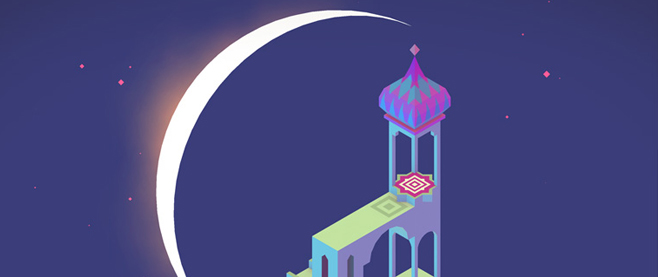
Best Buttress – Monument Valley
The flying buttress is a triumph of lateral thinking. Gothic architects, seeking to create interior spaces to mirror the heavenly vault, found that horizontal exterior support could be used to augment the vertical thrust of the walls in carrying the weight of the ceiling. The physics aren’t terribly complicated, but the effect retains the magic it must have held at the time. There’s something similar at play in Monument Valley, where spaces twist and turn, and gravity itself bends along with the architecture. It’s all a trick of perspective, but the effect retains its magic. And then the game itself expanded, not in a straight line but sideways – not so much expanding the story as teasing out the surprisingly emotional connection between Princess Ida and the animated yellow column that follows her like a puppy. I cried aloud when it was lost, but there were miracles ahead. Or if not ahead, then off to the side.
– Gavin Craig

Best Singing Voice – Transistor
A sleek futuristic city. A beautiful, cryptic woman. A ginormous freakin’ sword. Indie game Transistor draws from 1980s cyberpunk, and its stylistic predecessor 1940s noir, but also propels the genres into the digital age with its own distinct style. The game opens on Red, a singer who has suddenly lost her voice in a mysterious event that also gave her the Transistor, a talking sword-like device that contains the key to stopping the Process, an infection of robots razing the futuristic city of Cloudbank.
Everything in Transistor is about blurring the lines between the physical and the digital: from its beautiful Blade Runner-meets-watercolors art style to its musical blend of electro-synth and “old-world” instruments; to the unique combat that intercuts top-down hack-and-slash with turn-based strategy; to even the story itself, as Red tries to fight the Process and reclaim what she holds most dear.
– Jill Scharr
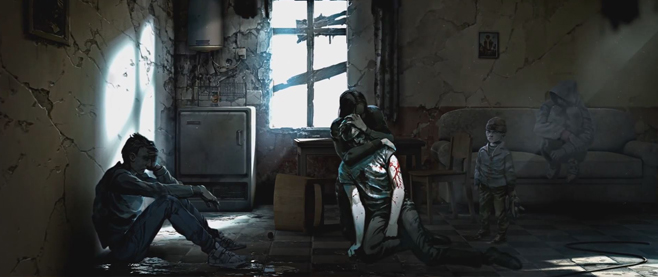
Best Worst Consequences – This War of Mine
When I start a game, the last thing I want to do is steal from a hospital. But here I am, shuffling through cabinets in a patient’s room, hoping the injured feller sleeping doesn’t wake up.
Morality systems intend to shine a light on the darker parts of our psyche. So to protect the porcelain image of myself, I simply click off all the checkboxes in the “good” column. Easy enough with most games: generally, you’re not making a leap-of-faith choice; you’re picking a comfortable consequence.
In This War of Mine, good and bad choices seem obvious enough, but when winter shortages hit and your friend lies dying after a deal gone bad in the only safe marketplace, sometimes you need to rob a hospital. Unforeseen consequences of small player actions build the game’s story like a shaky tower of bricks, made all the more grim with the Sarajevo-inspired backdrop.
– Matt Perez

Best Playable Teaser – PT
You may’ve heard this before: PT is fucking scary.
That’s a blunt way of putting it, but sometimes the best truth is one laid plain. In the case of Hideo Kojima’s Silent Hills intro, words are barely enough.
PT is terrifying because you don’t want to be there. Its haunted house is an eerie place punctuated only by the plaintive drizzle of rain outside. Looking down the aged hardwood of the first hallway, it’s too quiet. Carefully descending the basement steps for the first time, you’re just waiting for something awful to happen. You reach the stairwell’s base and go through the door. It slams shut behind you. Then nothing. You’re standing right back where you started. This might be enough to make you freeze in your tracks right there. Even if, like me, you love horror games.
It’s just the beginning of PT’s downward spiral, one that builds with every unnerving loop of the house as the environment gradually changes. At first it’s little things – lights going out and closed doors opening. Then you start catching glimpses of figures in the dark. Otherworldly voices emanate from nowhere. You constantly feel like you’re being watched; turn around and no one’s there. Meanwhile, you continue circling an increasingly surreal space in some mad forced limbo, your sanity eroding as your anticipatory oh-god-this-time-something-bad’s-going-to-I-just-oh-god builds to chest-bursting levels. Or is it all in your head?
In the end, PT may reduce you to a babbling, hyperventilating idiot, chasing ghosts that may or may not be sentient within the confines of its code and searching for solutions to riddles that might not even exist. In other words, Silent Hill‘s future is in the best hands since Team Silent’s.
– Steve Haske
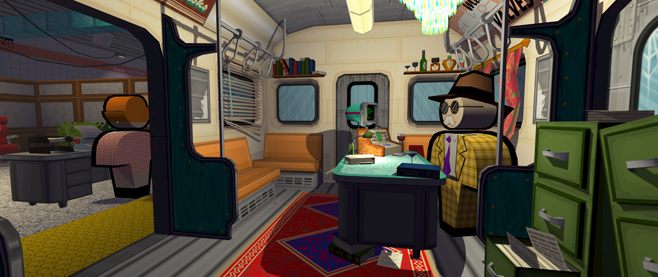
Best Wedding – Jazzpunk
The best pranks are the kind you commit to one hundred percent. Jazzpunk isn’t just an adventure game with goofy moments, its has goof in its DNA. That’s not to say that there isn’t stuff to do. There are puzzles and whatnot – quests, places to go, things to click. In it you’re a secret agent in a retro-technological world where all logic is tenuous. The result is disarming, surprising and almost always funny. The second upside of this irreverent approach is that Jazzpunk also looks unabashedly retrograde – like those mutlimedia CD-ROMS the Voyager Company used to put out in the mid ‘90s. So, yeah, if you’re the kind of person who looks longingly at the dusty boxes for interactive PC CD-roms like Starship Titanic and The Residents: Freak Show, if you have been known to sigh, “why don’t they makes games like that anymore,” know that they do, that they’re good and they’re funny as hell.
– Gus Mastrapa
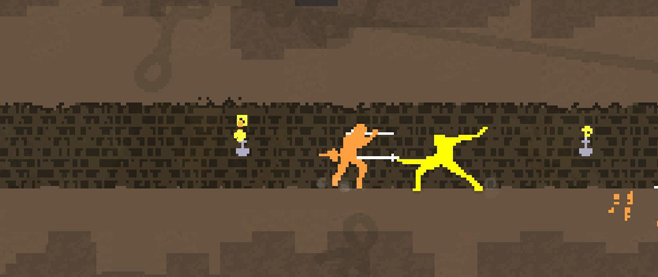
Best Sword Throwing Simulator – Nidhogg
A deceptively lo-fi multiplayer swordfight, Nidhogg had a lot of hype to live up to after being lauded at indie showcase events for the past four years. Jostling with your friends on the sofa, rapt in the back-and-forth flow of a tightly-fought duel, it feels well worth the wait.
Tense tug-of-wars, flamboyant showboating and chaotic button-mashery all contribute to the frantic combat, but it’s the sense of theater and of playing to the room which makes Nidhogg an essential party game. Even with your back to the wall, your sword flicked from your hand by a superior opponent, there’s still a chance to divekick them in the face, snatch their fallen blade from the floor as you cartwheel past and stab them in the back as they scramble back to their feet, before making a dash for the sanctuary of the edge of the screen and the devouring jaws of the giant mythical penis-worm who grants you victory. And your friends will be cheering you on every step of the way.
– Rob Haines
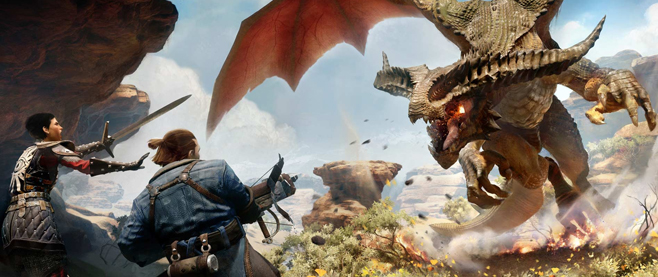
The Love During Wartime Award – Dragon Age: Inquisition
One hundred and twenty-two hours. That’s how long I’ve been playing Dragon Age: Inquisition. I still haven’t finished – from what people tell me, I still have two main story missions and a handful of companion quests left. I can’t honestly recall a game that has so completely held my attention for so long.
A lot of this is down to the fantastically written characters. I love them all. I don’t want to leave them. So I delay, occupying my time collecting collectibles and hunting dragons, hoping to hear a just one more conversation between my companions. The thing is, I can only do this so long before I exhaust all the available material. To get more of these precious interactions, I need to progress the story, which in turn inches me closer to finishing the game. When that happens, I won’t have Dorian or Blackwall to pal around with, or Cassandra to moon over. I don’t honestly know what I’ll do with my time when its all over.
That a game can create such a narrative space for me, especially in a year where I increasingly have little time to devote to games (and honestly, even less desire) is nothing short of phenomenal.
– Stu Horvath
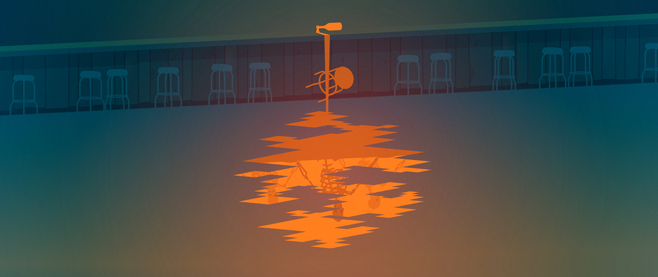
Game of the Year – Kentucky Route Zero: Act 3
Conway in Act 3 of Kentucky Route Zero is us in Act 3 of our lives: a little beat up, tired and surprised to discover that life is simultaneously more mundane and more spectacular than he ever thought it could be. In the latest act of Cardboard Computer’s surreal adventure game, we find Conway not so much on the road to self-discovery as he is on the road self-confrontation.
There’s a mounting pressure throughout the first two acts, and in Act 3, that pressure closes in swiftly and leaves Conway gasping – for air, out of surprise and with wonder – until he is inevitably faced with the single, inescapable question of his life: how will he escape this mortal coil and all of its inherent trials and debts? It’s a question we begin to understand applies to each and every character making their way along Kentucky Route Zero, or for that matter, any of us who consider ourselves travelers, sojourners or pilgrims. The real power of KRZ: Act 3 is the brazenness with which it confronts us with a harsh truth: we can distract ourselves with interesting and sublime art, personal relationships, and obsessive self-identification, but the questions we most often fail to ask ourselves are the ones that really matter. Those accounts we have to pay off, that we push to the back of our minds, that will one day, inevitably, come back to haunt us.
– Richard Clark


